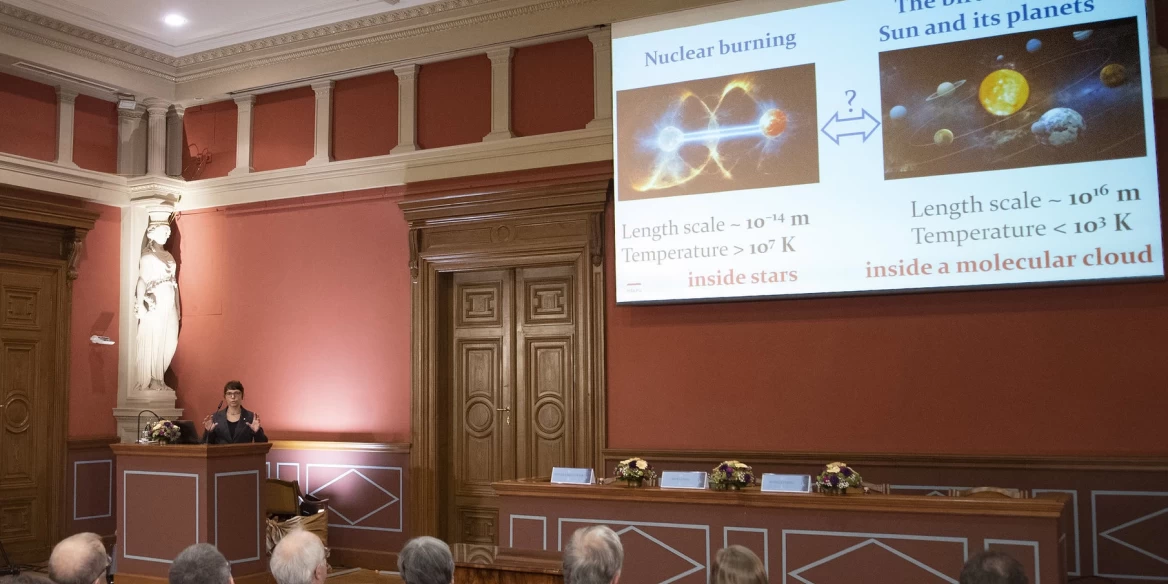The five-year, HUF 250 million Lendület (Momentum) grant is the largest one awarded by the Academy. This project is titled "Nuclear burning products preserved in meteorites as traces of the birth of the Sun and planets".
"Stars are both dust factories and nuclear reactors, where atomic nuclei interact and change. The combination of these two processes results in the signatures of nuclear processes to be carried by dust and to be observed today in meteorites and other solar system bodies. With the Lendület support we step into the field of planetary science and investigate the formation of the Solar System through the lenses of nuclear processes in stars", Maria Lugaro explained the main aims of the project.
(Photo: Tamás Szigeti, MTA Kommunikáció)
The short summary of the project is as follows:
To understand the cosmic processes that lead to the creation of stars, planets, and life, we need to investigate the birth of our Solar System. Even if this birth happened roughly 4.6 billion years ago, we can still examine it today by interpreting analyses of meteorites carried out with extremely high precision in laboratories worldwide. Some of the composition observed in meteorites represents the fingerprint of nuclear reactions inside the stars present at the time of the birth of the Sun, potentially affecting its environment.
In this project we interpret the nuclear signatures found inside meteorites to trace the processes that led to the formation of the Sun and its planets. We will use abundances predicted by models of nuclear reactions inside red giant stars and core-collapse supernovae to determine the exact stellar origin of the stardust grains and the radioactive nuclei abundances that have been discovered via meteoritic analyses. Variable signatures of nuclear burning in stars are also found in the bulk rocks of meteorites that formed in different regions of the proto-planetary disk. This means that stardust grains carried such signatures and were distributed heterogeneously; however, the processes that caused such variability are unclear and debated. We will use nuclear signatures to identify and predict what types of stardust were both present and predominant in the disk and, ultimately, which processes led to the observed variability.
You can watch the introductory presentation to the project in the video below:
